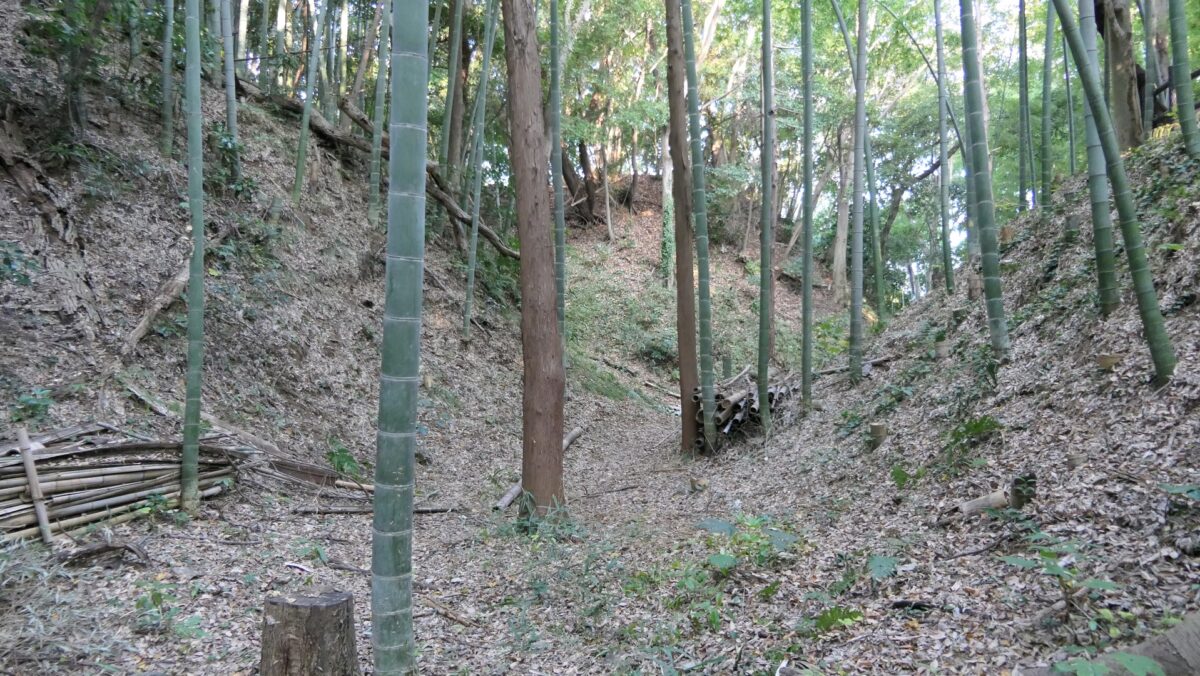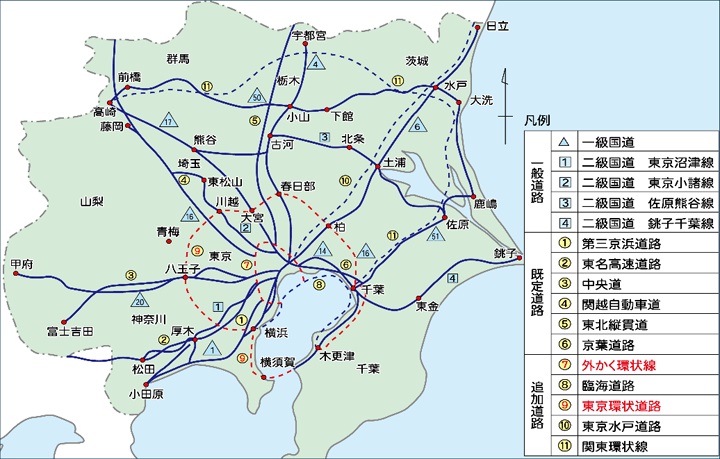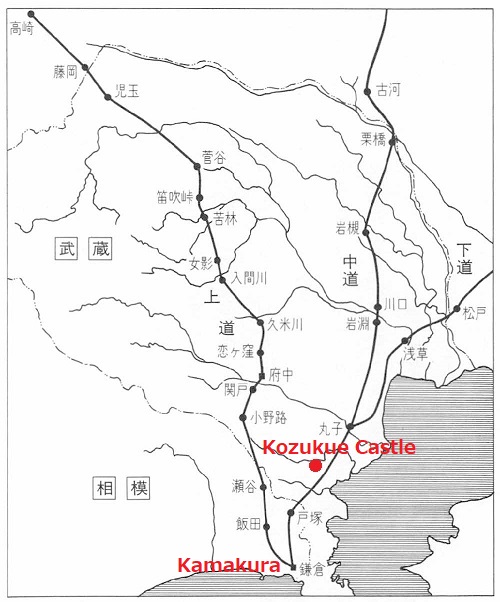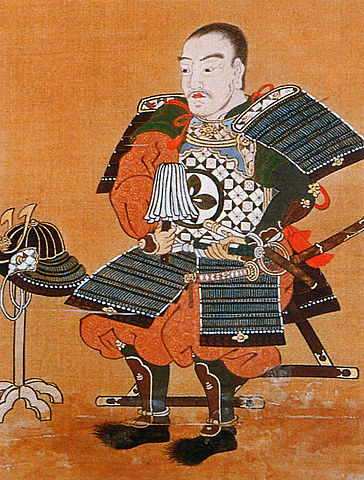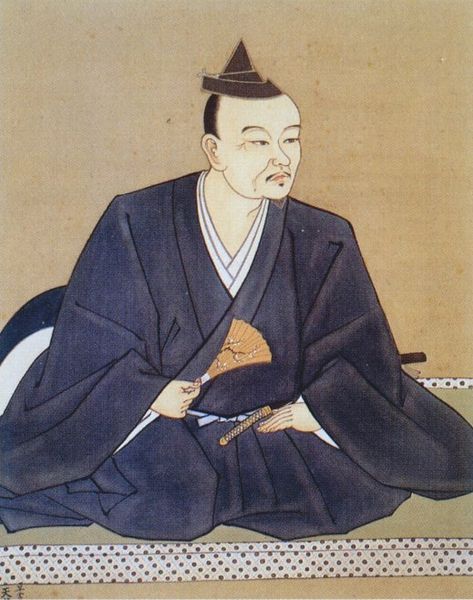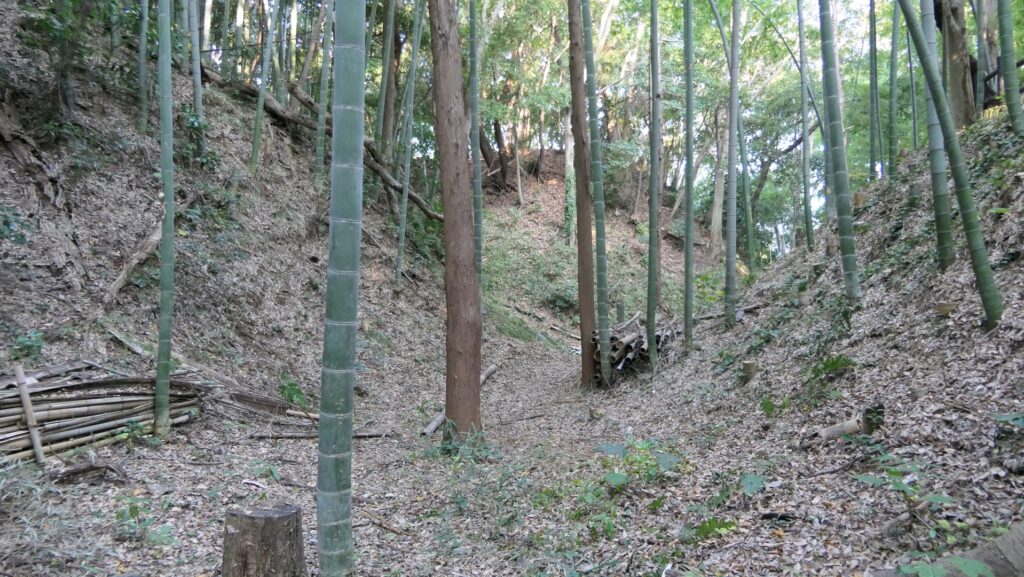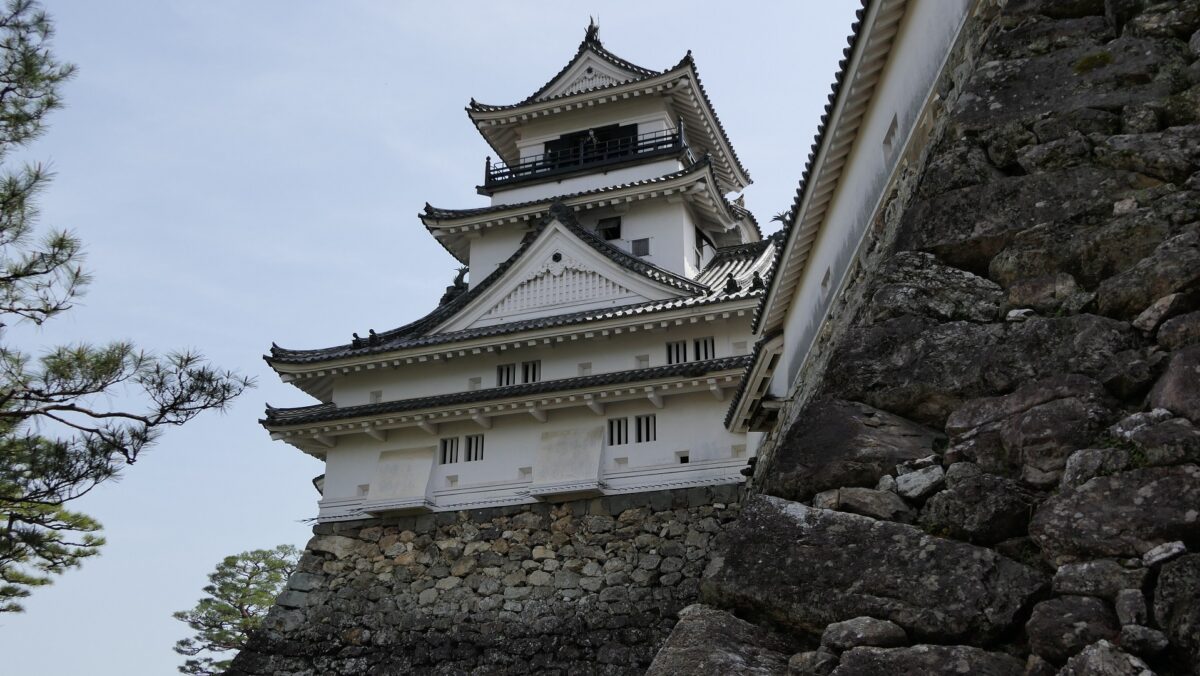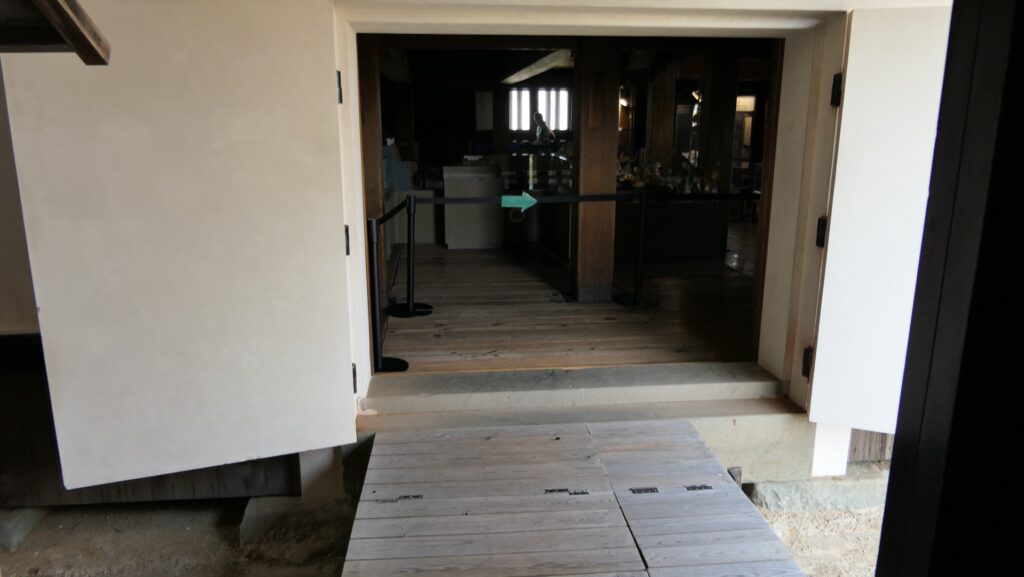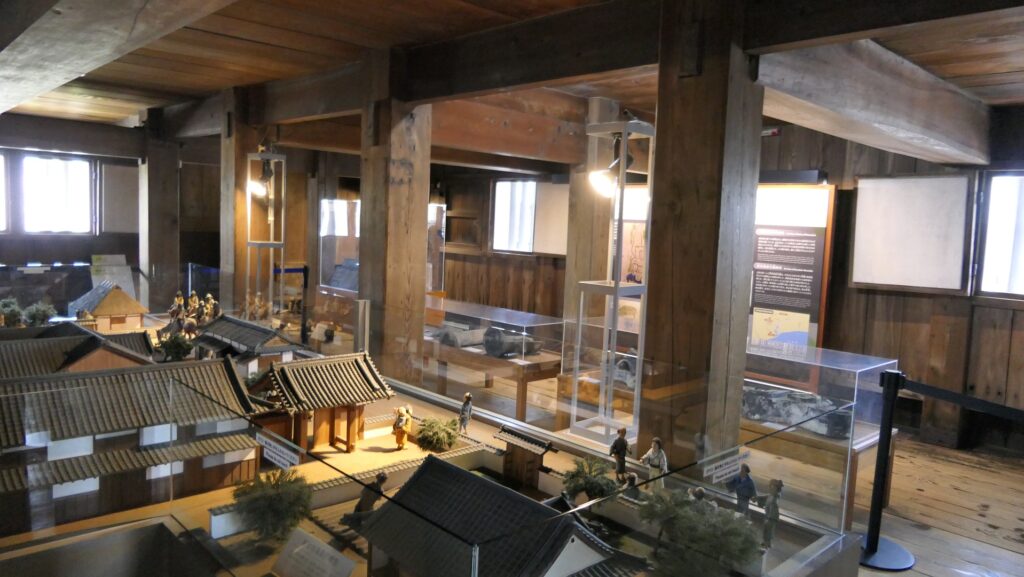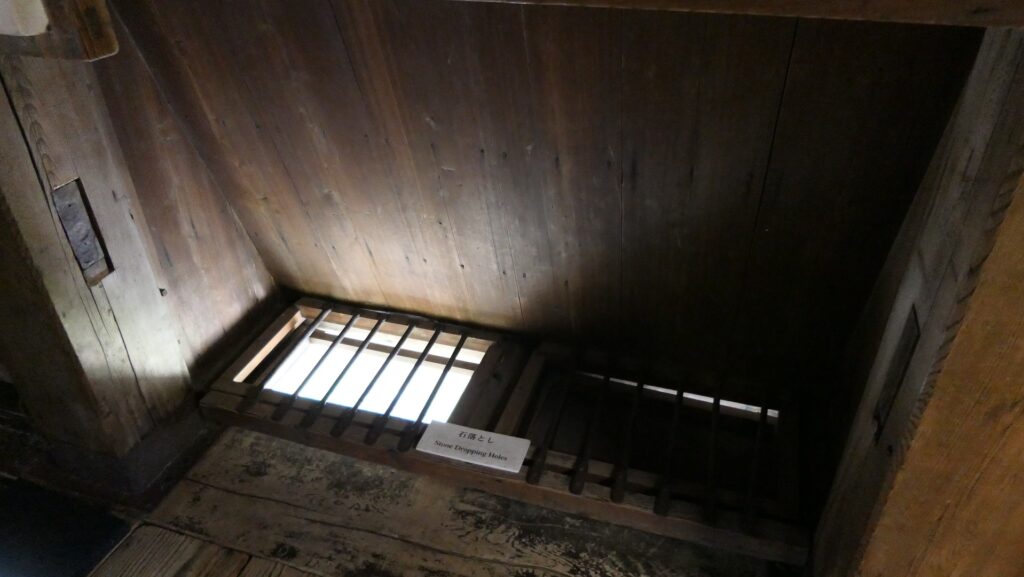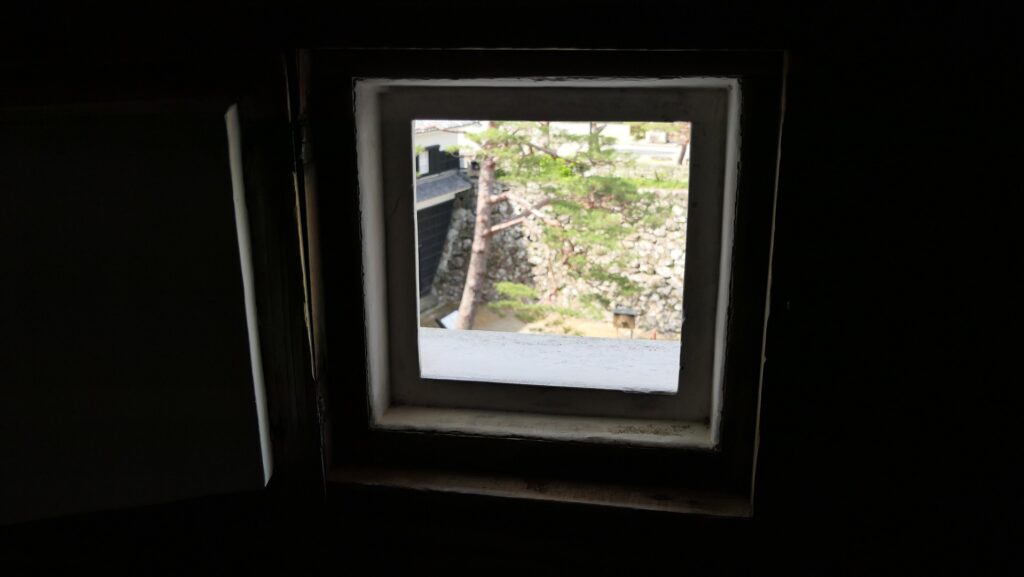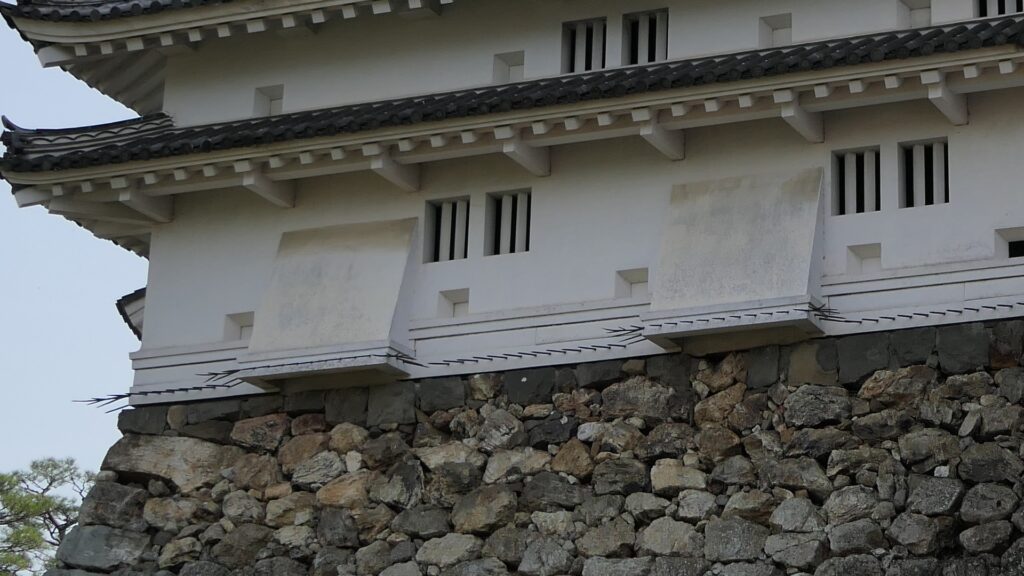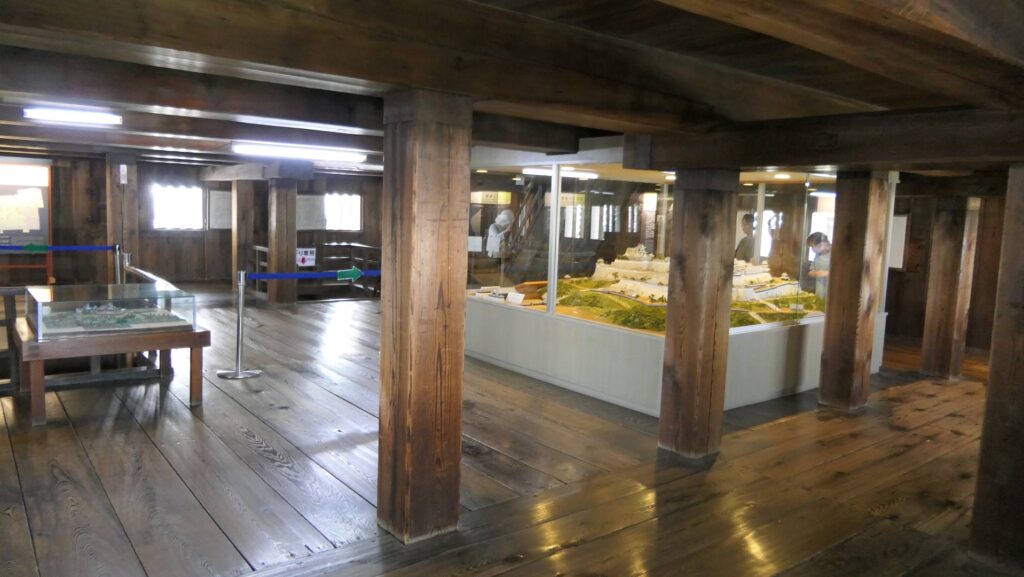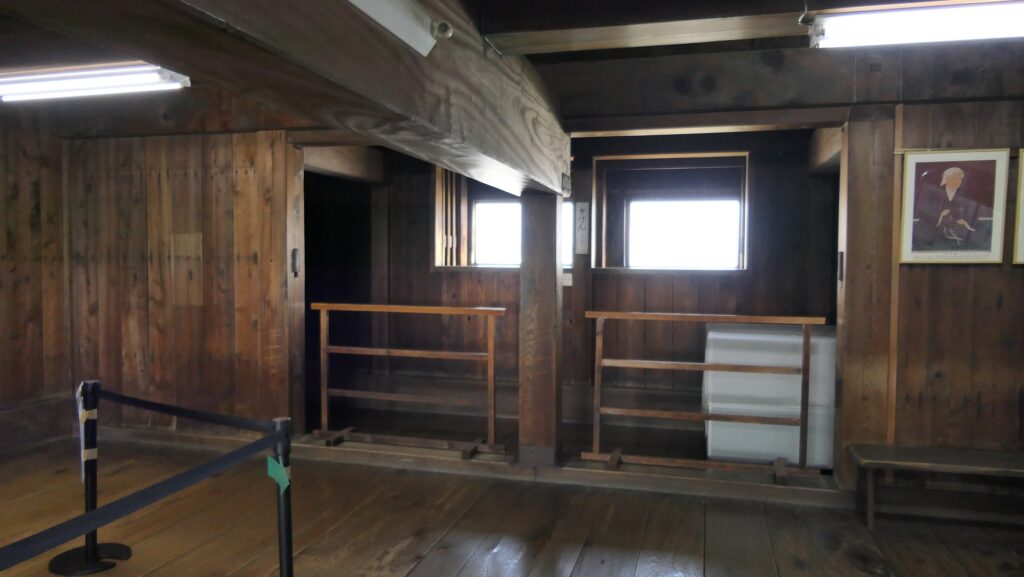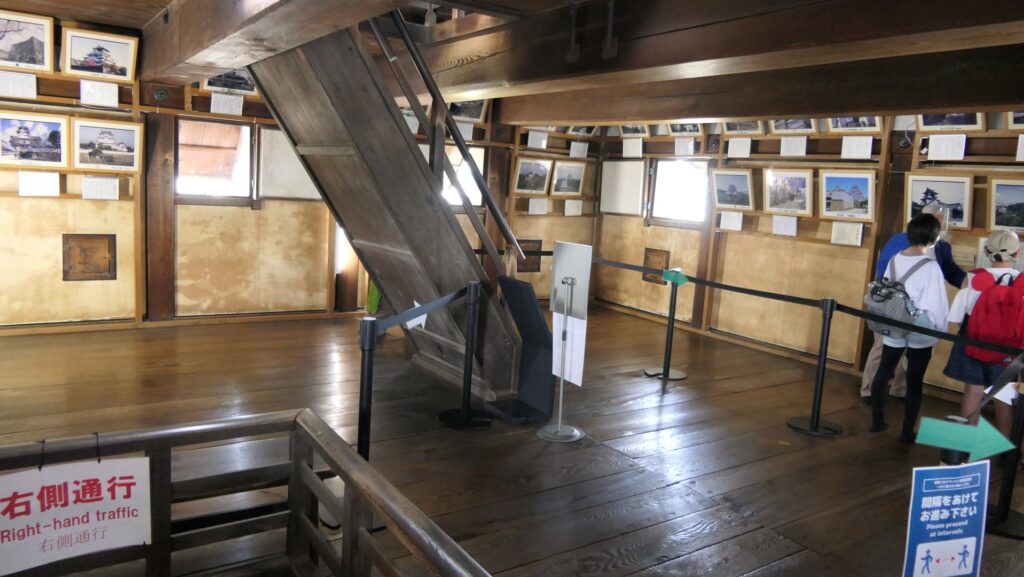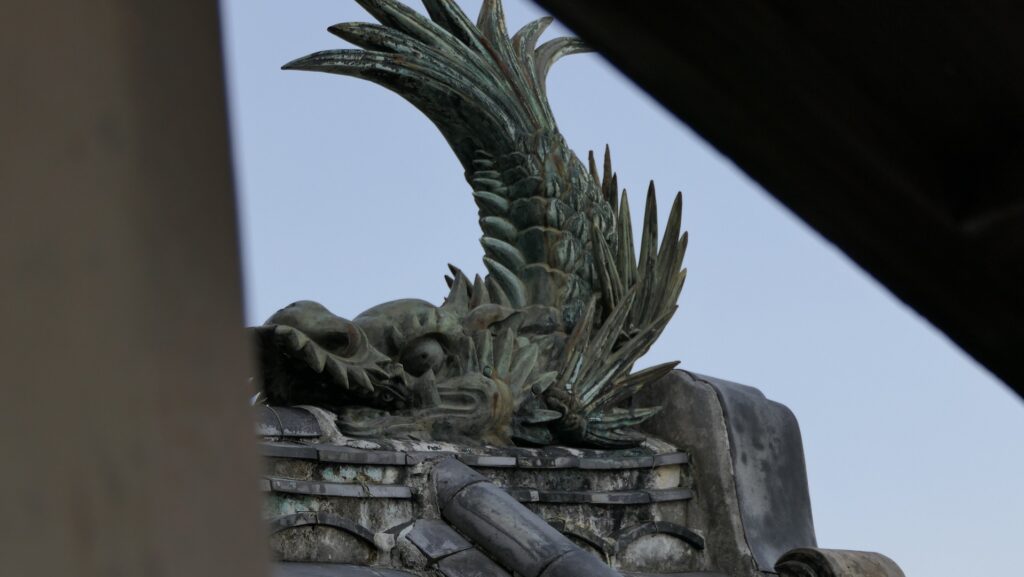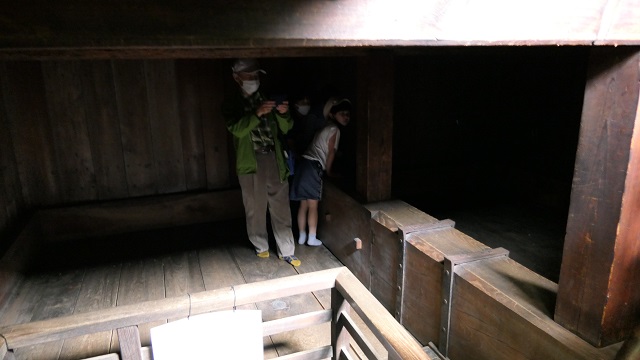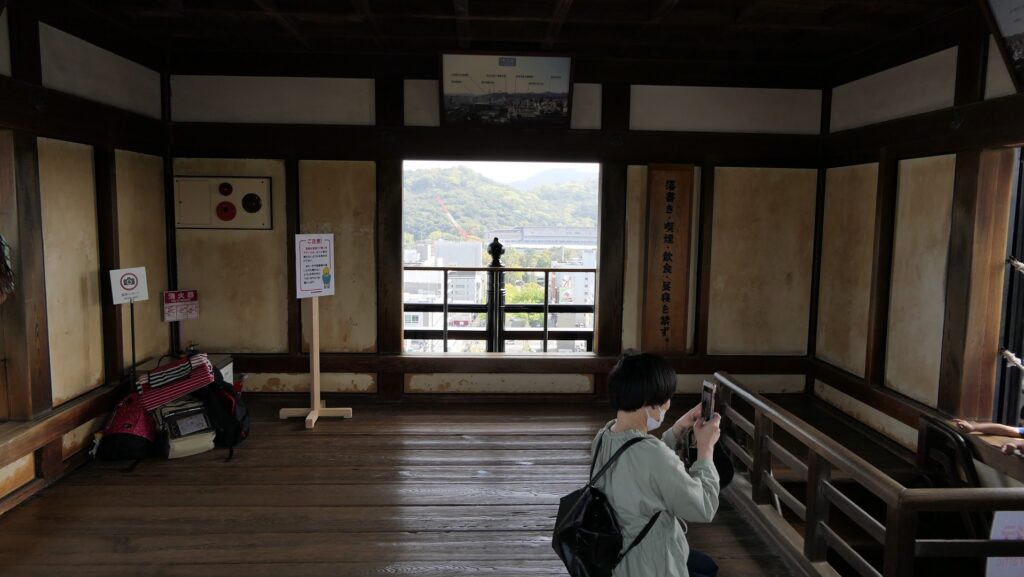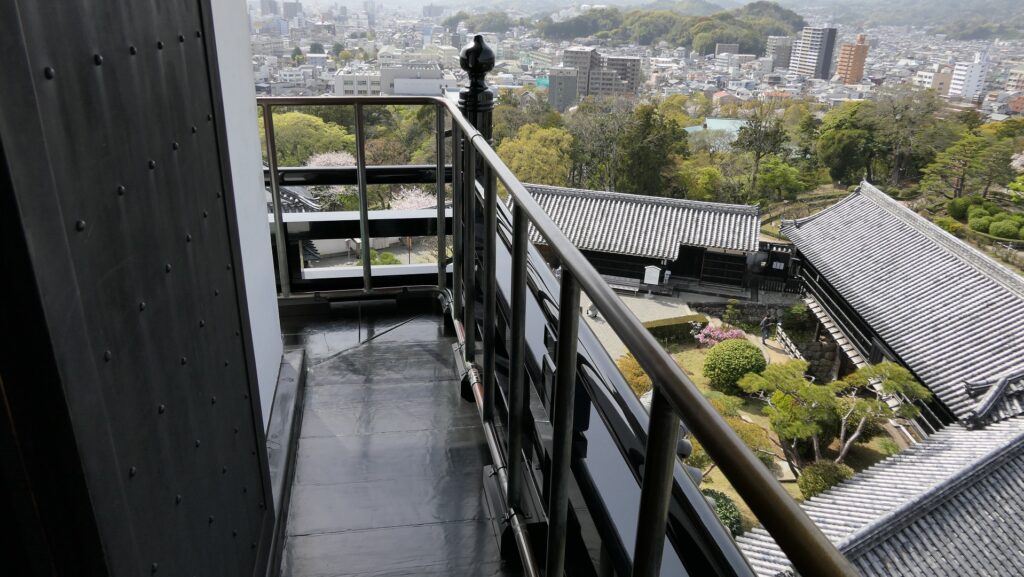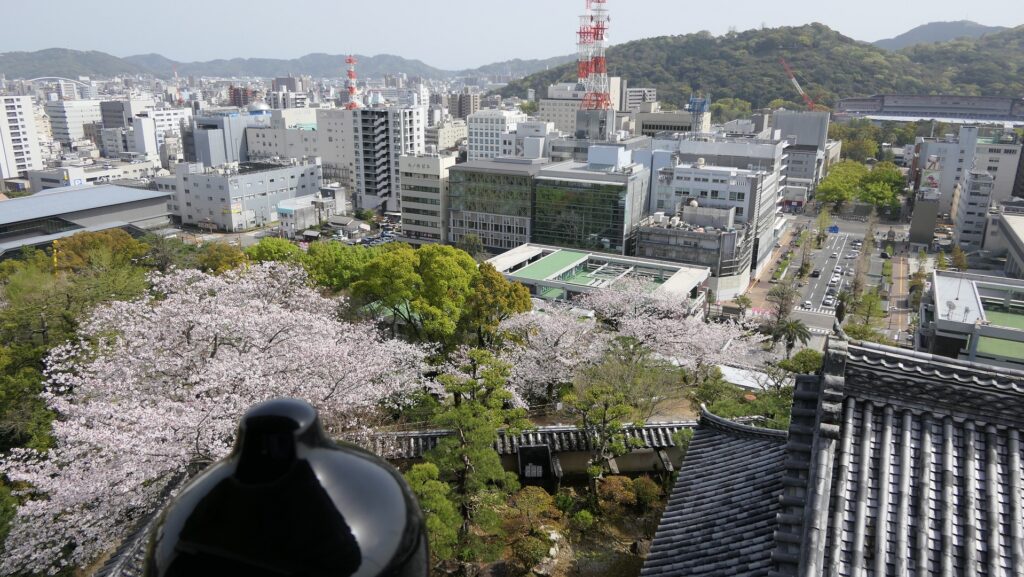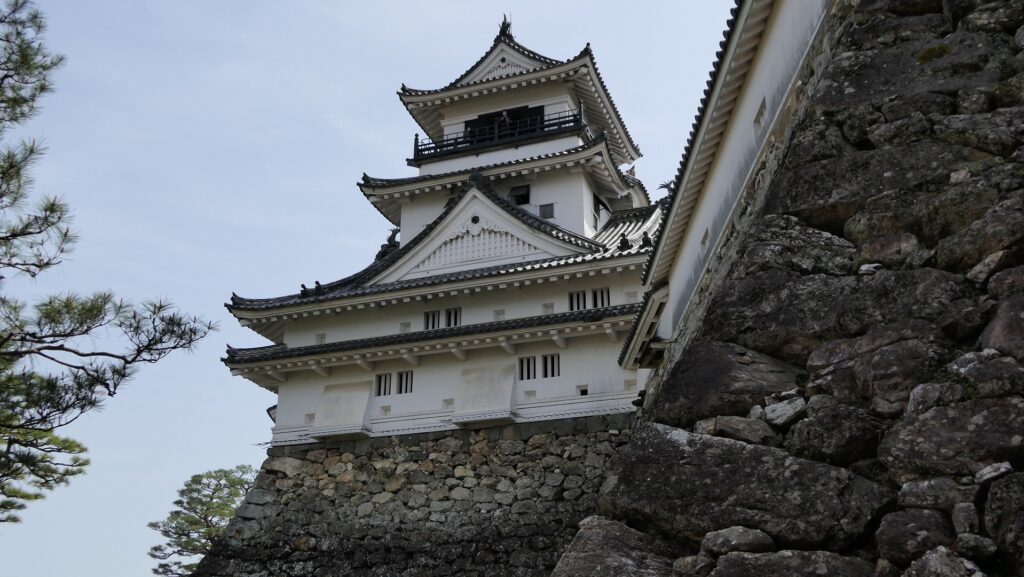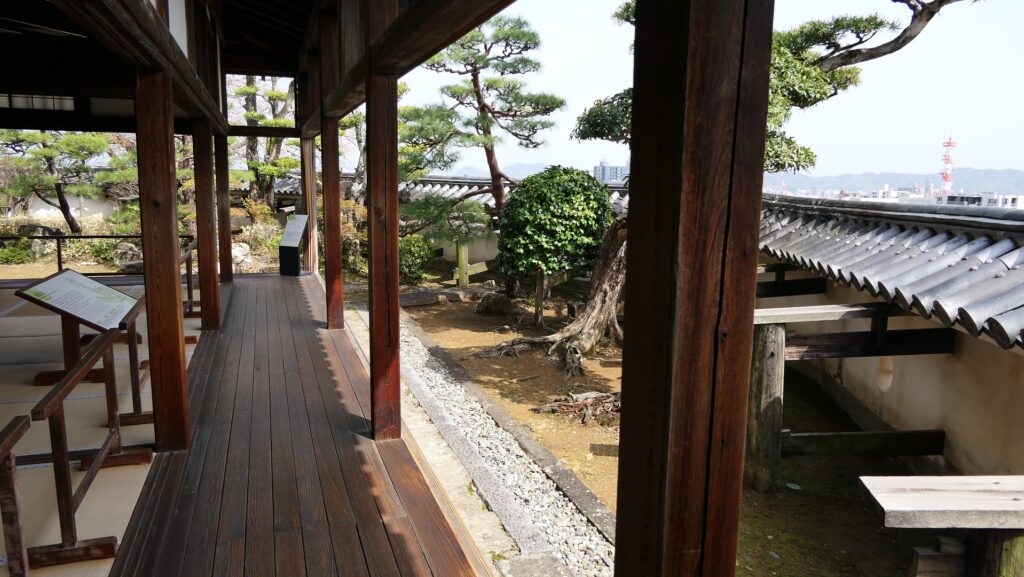Features
Ruins planted with Bamboo Forest
Today, the ruins of Kozukue Castle are preserved by Yokohama City as a park called the Kozukue Castle Ruins Forest. Yokohama City has the largest population among the cities in Japan except for Tokyo Special Ward, with about 3.8 million citizens. Even the hilly area around the ruins is covered with lots of modern facilities, office buildings and residences. However, once you walk into the ruins, you may feel like you are in another world. The hill for the ruins is basically planted with a beautiful and well-maintained bamboo forest. The foundation of the castle also remains under the forest.
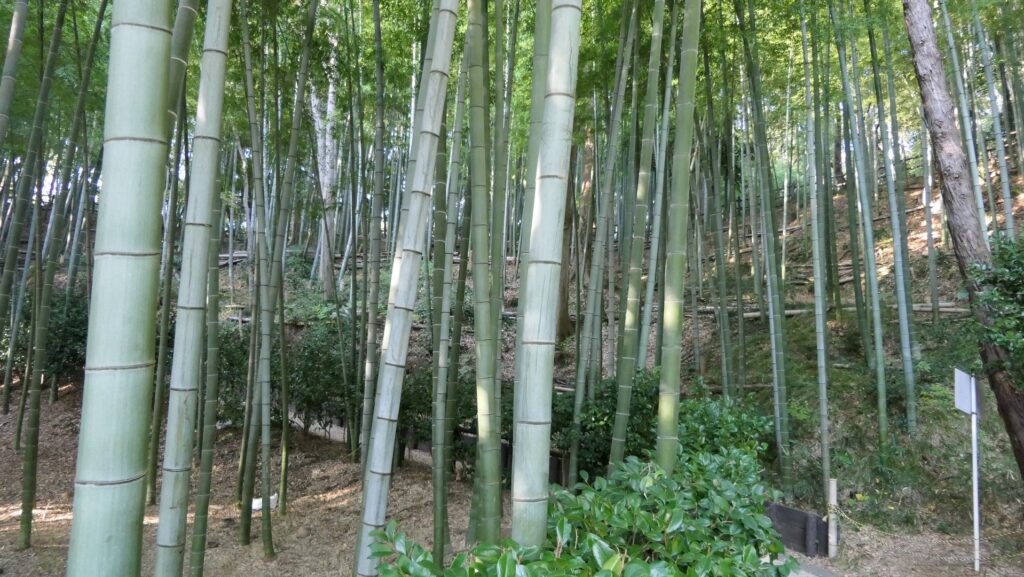
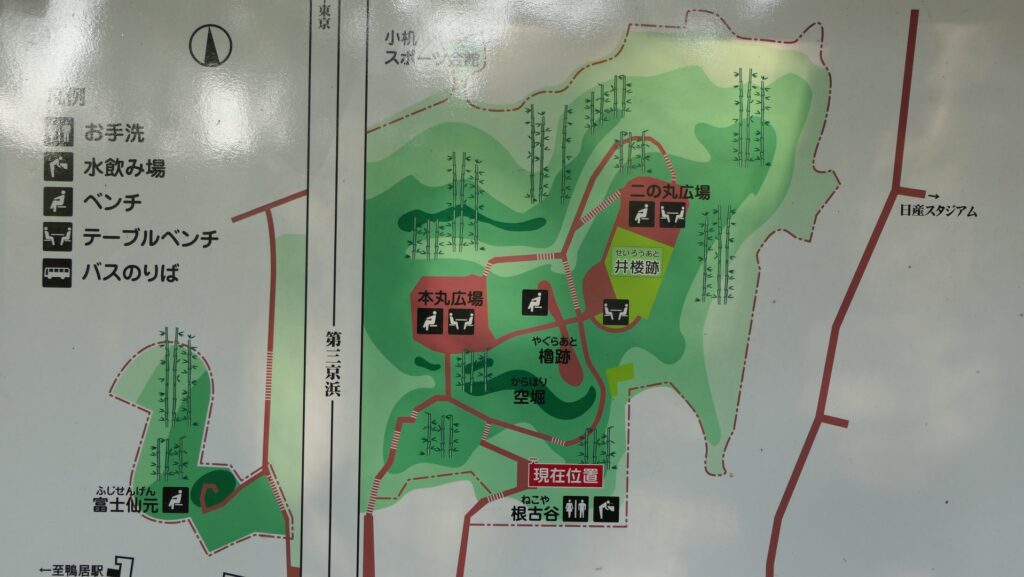
You can climb up on the well-developed trail from the foot of the hill called Nekoya.
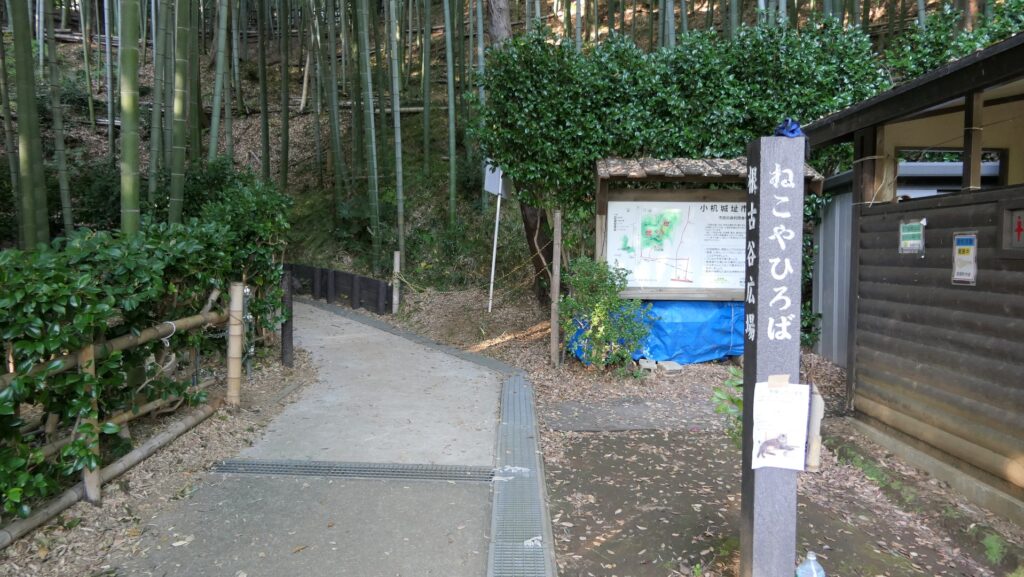

Large-scale Dry Moat
You will soon reach the top of the outer earthen walls and see the large-scale dry moat in front of the enclosures. This dry moat is still about 13m in width and about 12m in depth. It must have been much deeper in the past. When the excavation team recently dug the bottom of another dry moat in the castle at over 2m, they still could not find its original bottom.

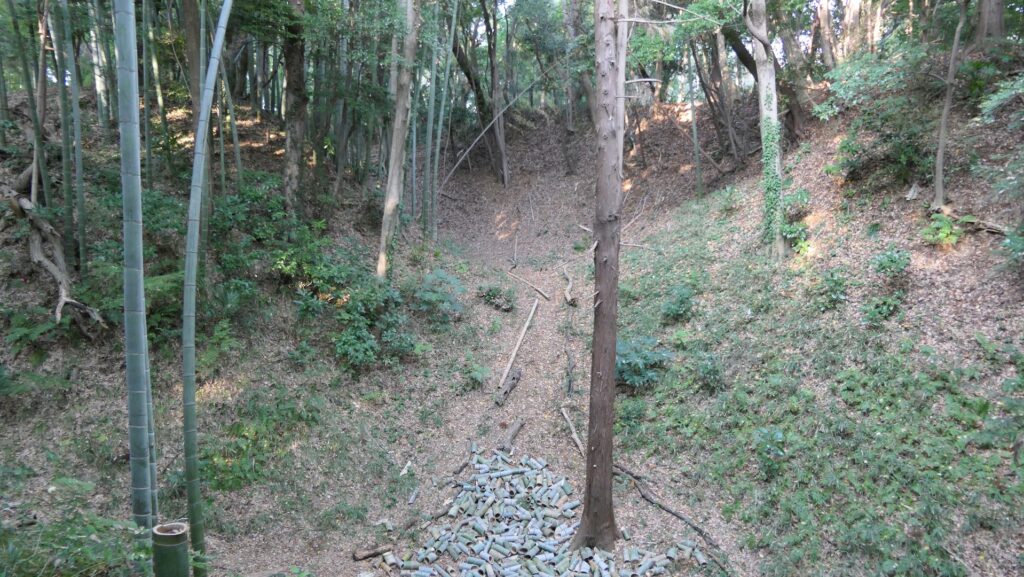
The trail goes on the outer earthen walls at the same level as the top of the moat, but you can also go down to the bottom from some points where the slope of the moat is gentle. If you stand at the bottom looking up, you might find another perspective of the castle.

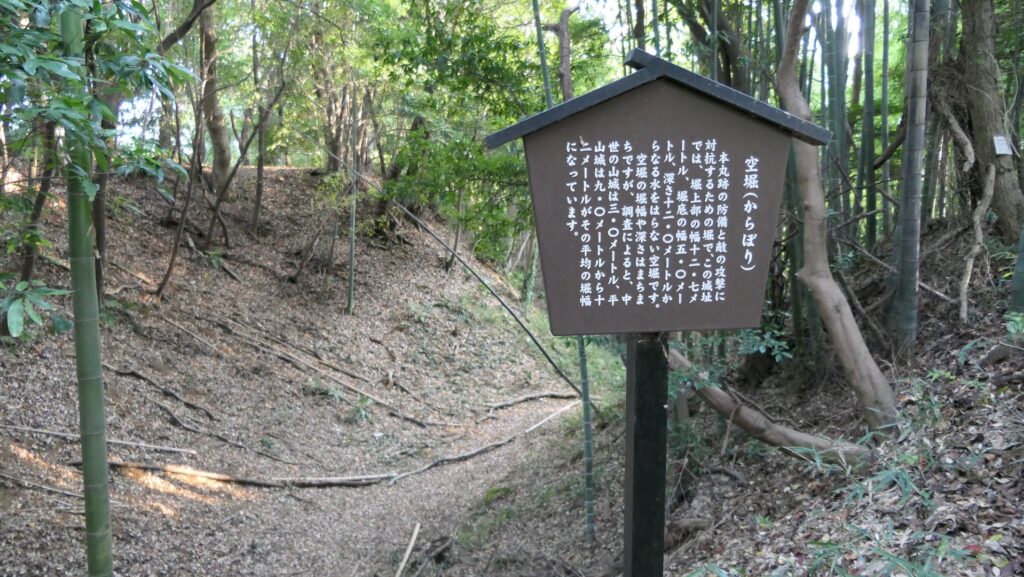
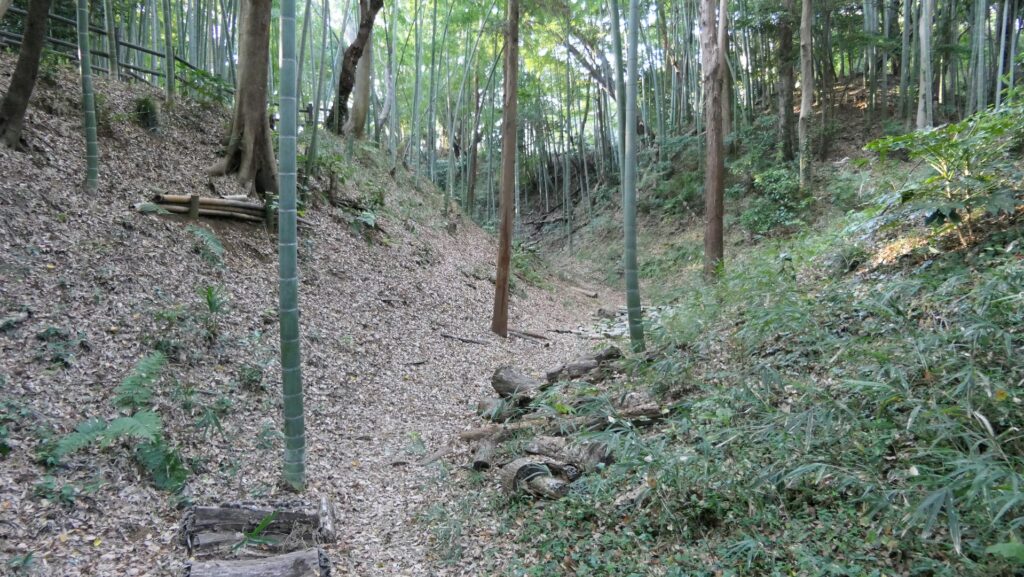
Eastern Enclosure under Excavation
If you walk around the outer earthen walls to the right, you will reach the Eastern Enclosure which is also called the Second Enclosure at the site. The excavation is also ongoing at the center of the enclosure, where some buildings were built in the past.
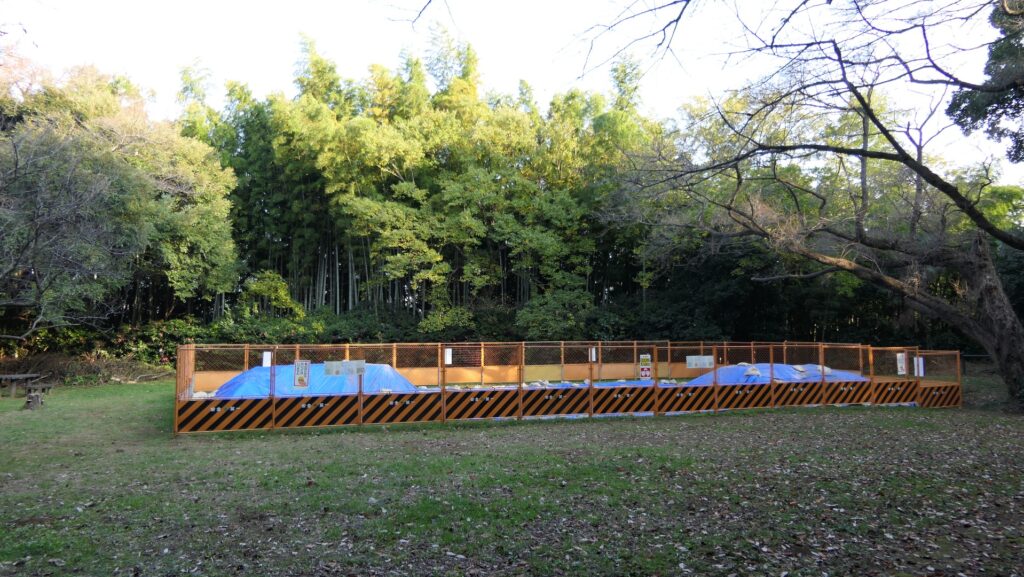
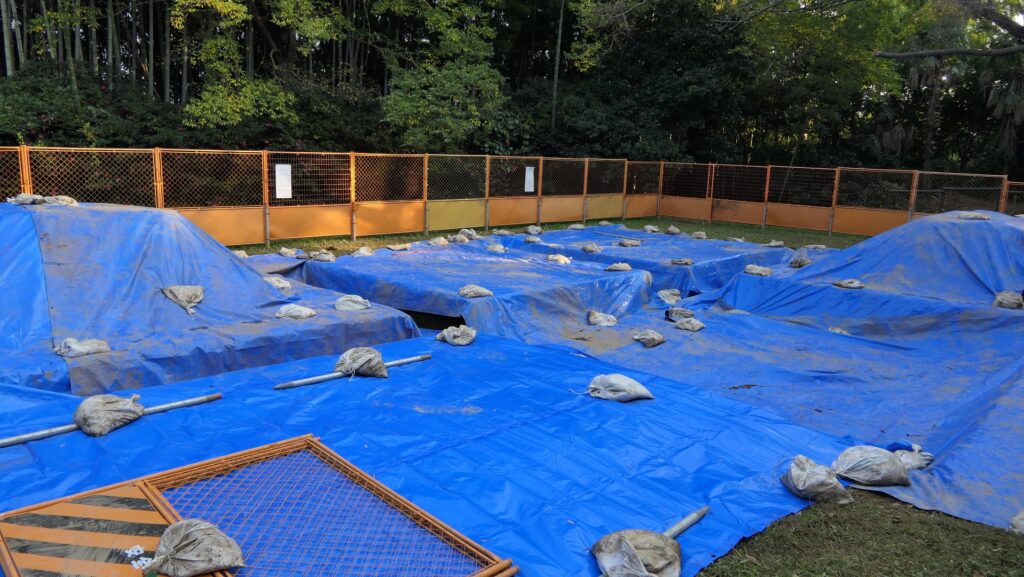
You can also climb up to the high turret earthen base at the edge of the enclosure, where you can look down the dry moat around it from the top.
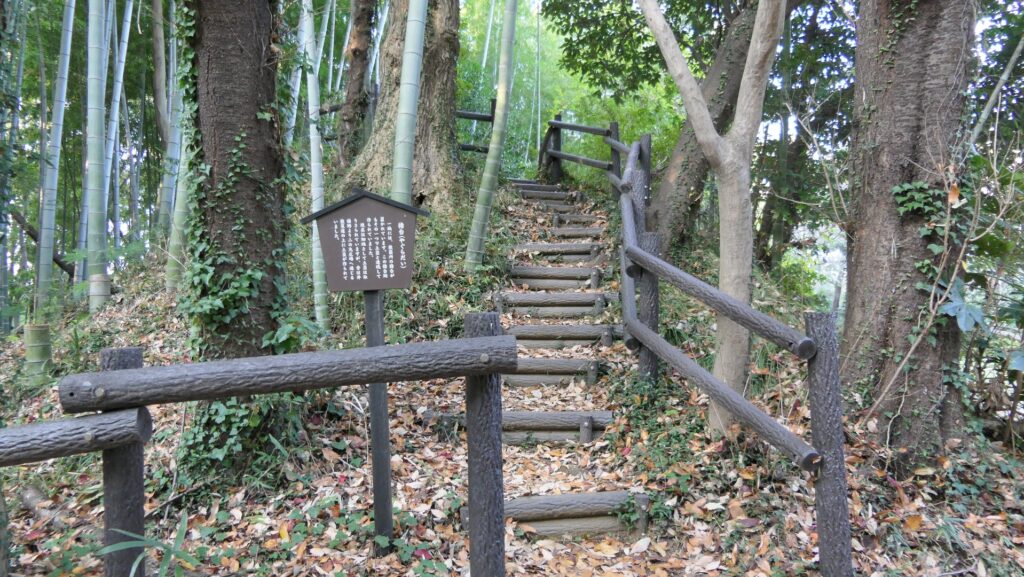

The trail around the enclosure goes to the bottom of the moat. You will find the beautiful bamboo forest around the enclosure again when you walk on the trail.

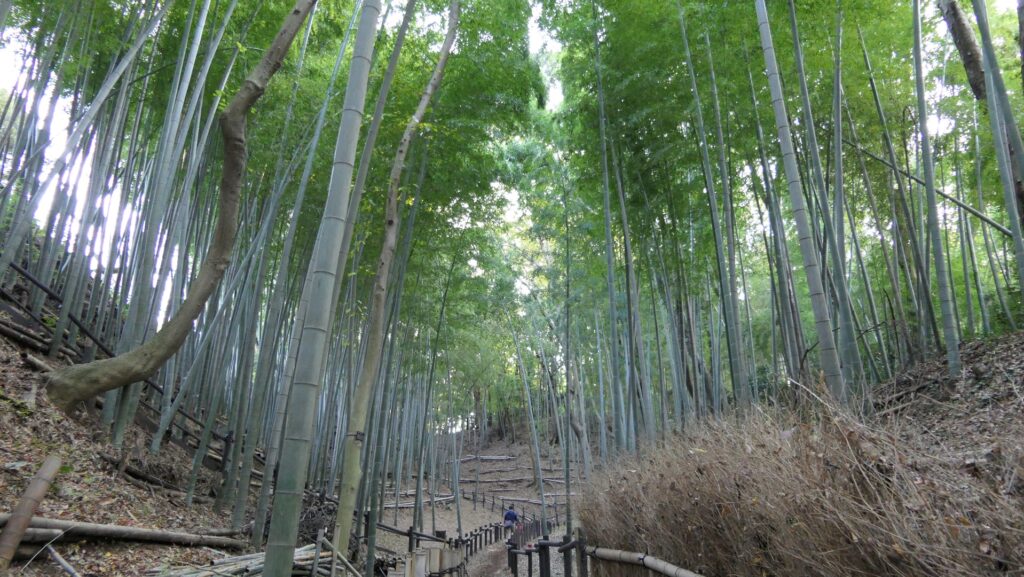
Western Enclosure used as Sports Square
If you walk around the outer earthen walls to the left or walk over the Connecting Enclosure from the Eastern Enclosure, you will reach the Western Enclosure which is also called the Main Enclosure at the site. The inside of it is a flat square, so it is used for sports like baseball now. An altered gate called Kabuki-mon was built at the entrance of it to look like the Main Enclosure. However, in fact, historians have been arguing for over 150 years if this enclosure was really the main one. Some of them think the Eastern Enclosure was main. The excavation may find the correct answer in the future.

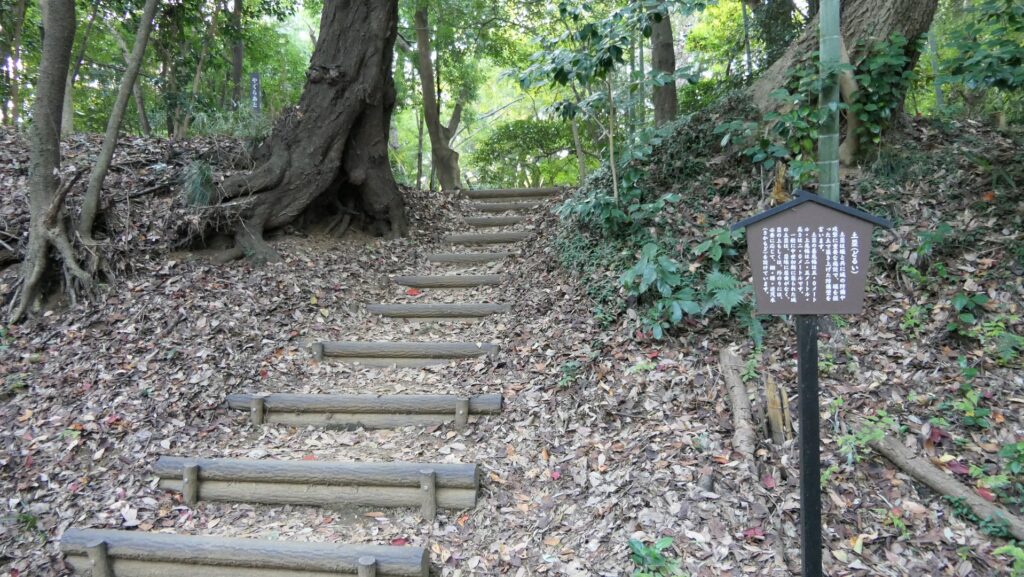
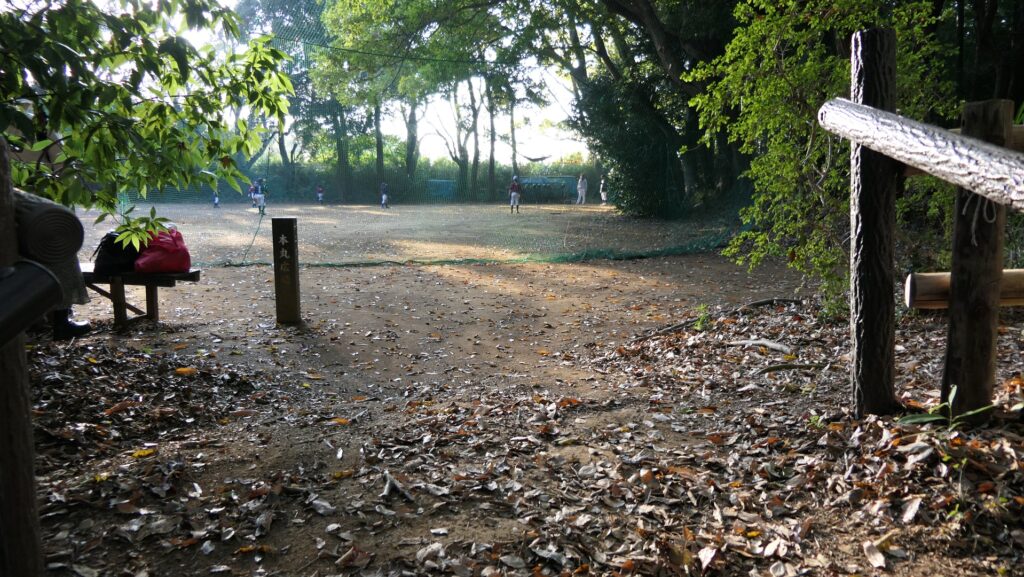
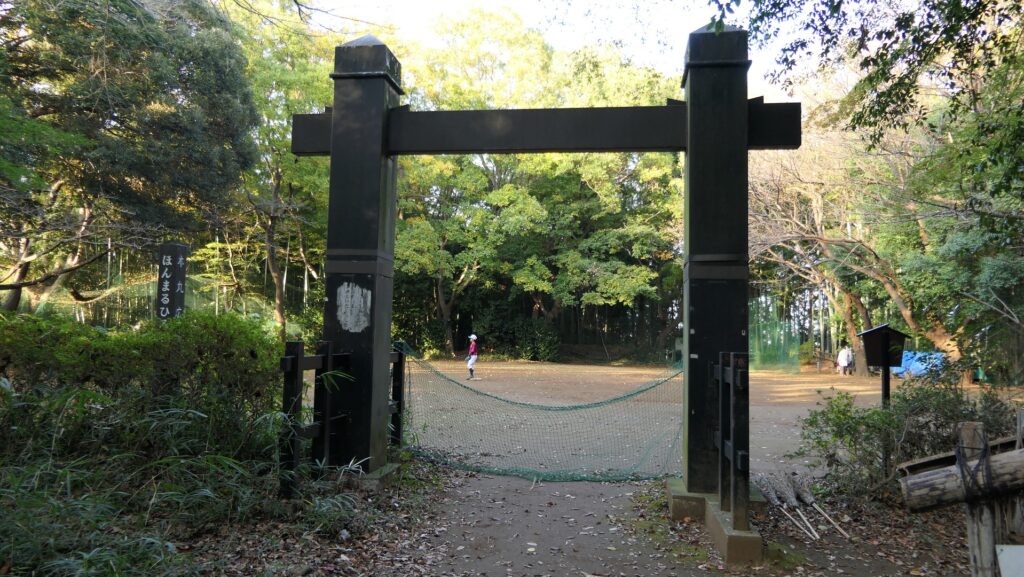
To be continued in “Kozukue Castle Part3”
Back to “Kozukue Castle Part1”


